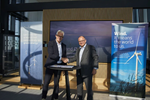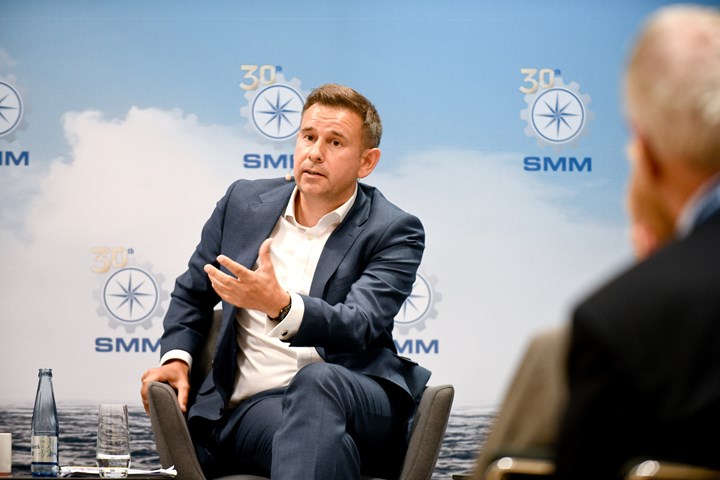Clarksons Research announces positive outlook on global offshore wind
Current offshore numbers are projected to expand fivefold to 250 GW of active capacity and 30,000 wind turbines by 2030, with significant investment in shipping fleets needed.
In its latest weekly insight, Clarksons Research (London, U.K.), a data and intelligence company for shipping, trade, offshore and the maritime energy transition, profiles progress in the offshore wind industry and the vital role it will play in energy transition.
Today’s offshore wind sector provides only 0.4% of the global energy supply, with 283 farms, 62.3 gigawatts (GW) of active capacity and approximately 12,400 wind turbines involved, according to Steve Gordon, managing director of Clarksons Research. These numbers are expected to expand fivefold by 2030, with projections suggesting about 250 GW of active capacity and 30,000 active turbines.
After some delays in 2022 related to inflation and interest rate rises, more than $56 billion of new capital commitments for offshore wind is expected in 2023, with an all-time high of $34 billion excluding China expected. An all-time global high of capital commitments for offshore wind projects is anticipated for 2024 in the range of $70 billion.
Nineteen countries are expected to host active capacity by the end of 2023, Gordon notes, which is projected to rise to 34 countries by 2030, driven by an energy transition and energy security focus. Currently, China has the largest GW capacity (30.5 GW, involving 121 farms and 5,936 turbines) but is closely followed by the U.K. which boasts 13.7 GW, involving 46 farms and 2,654 turbines. The U.K. is projected to reach 48.7 GW and 91 farms and 5,125 turbines by end of 2030 and remain a market leader in innovation — such as floating wind — and in supporting the electrification of North Sea oil and gas infrastructure.
Related to its growth, upsizing of wind turbines is ongoing, trending toward deep water applications and the expansion of floating wind solutions.
Clarksons Research estimates that the shipping fleet supporting offshore wind farm construction and maintenance has expanded to more than 1,300 vessels with approximately 200 under construction. After strong newbuild investments in 2022, this year has continued positively, with five wind turbine installation vessel (WTIV) orders, 10 service operation vessels (SOV) orders and 23 crewed transfer vessel (CTV) orders. The company is projecting about $8 billion in newbuild orders to be placed in 2023 and a total of $76 billion over the 2020s as a decade.
According to Gordon, Clarksons Research’s long-term scenarios suggest offshore wind will play a vital role in the energy transition, potentially providing between 7% and 9% of global energy supply by 2050 and requiring an approximate 20-fold increase in generation capacity.
The full version of Clarksons’ weekly insight is available on request from the company, or is downloadable from RIN and SIN for subscribers.
Related Content
-
Composites end markets: Batteries and fuel cells (2024)
As the number of battery and fuel cell electric vehicles (EVs) grows, so do the opportunities for composites in battery enclosures and components for fuel cells.
-
Novel composite technology replaces welded joints in tubular structures
The Tree Composites TC-joint replaces traditional welding in jacket foundations for offshore wind turbine generator applications, advancing the world’s quest for fast, sustainable energy deployment.
-
JEC World 2023 highlights: Recyclable resins, renewable energy solutions, award-winning automotive
CW technical editor Hannah Mason recaps some of the technology on display at JEC World, including natural, bio-based or recyclable materials solutions, innovative automotive and renewable energy components and more.
















